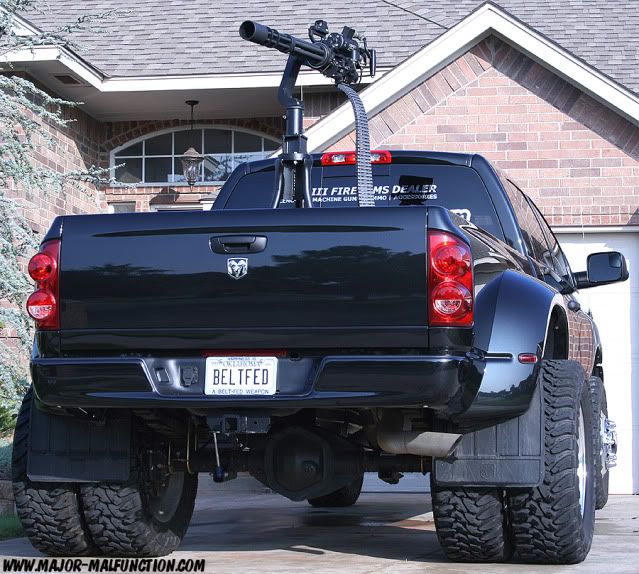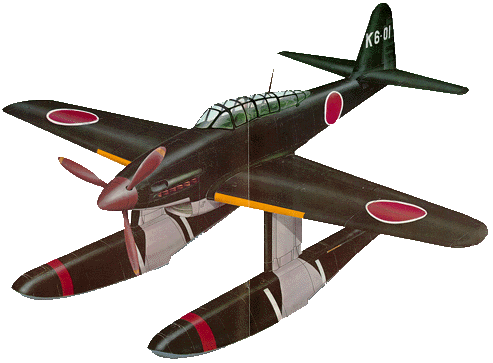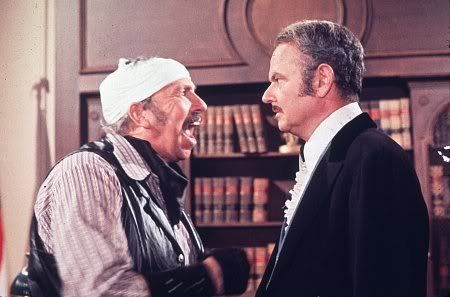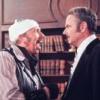-
Posts
272 -
Joined
-
Last visited
-
Days Won
2
Content Type
Profiles
Forums
Gallery
Blogs
Downloads
Wiki
Posts posted by donkey
-
-
I'm surprised that all their vehicles don't have flat tires with holes in the sidewalls that can't be fixed. Not that I am enciting any illegal activity or suggesting anything untoward. There is a cost for everything and the funerals are an indicator of ultimate price paid by our military. Those who choose to denigrate that sacrifice are scum.
haha... about time!
http://joemygod.blogspot.com/2010/11/oklahoma-westboro-church-gets-tires.html
Members of Westboro Baptist Church returned to their minivan to find its tires slashed after their picket of the funeral of a McAlester, Oklahoma soldier. And every shop in town refused to make any repairs.
-
-
Brabus covered most of it, but to make it a little clearer...
So again, to make this simple-- if I'm sitting in a Cessna 1xx with a flight instructor at the controls with myself in the 2nd seat, yet still going through "training" or the learning process, would that count towards my flight hours accrued that I can verify before a selection board?Yes, and the amount of time that will be logged will come from Hobbs meter.
Also, if you only need a couple of hours, most flight schools offer a intro flight for about a 100 bucks which is log-able time, and if you have a couple flight schools in your area... Can be somewhat cheaper then dropping 150 - 180 for each hour for a couple of hours at the same place.
-
-
EDIT: Not really safe for work I guess.
lol, http://ugliesttattoos.com/2010/03/24/funny-tattoos-giant-cock/
*Ron Burgundy voice* "I immediately regret this decision."
-
 1
1
-
 2
2
-
-
**REVIVAL**
Anyone read anything else good recently? Just found out my campus library has Once An Eagle. Needless to say, I'm excited to check it out. Should be a nice change of pace from my Dynamics textbook...
-
9. Sharks with freakin laser beams...

-
Well, today started off well at least...
-
-
To Lt Zilberman

I can only imagine how VERY sobering it must be to hear the bail out order given...
-
-
Might as well share my most memorable air-sickness story (although I wasn't the one performing the protein lofting.)
Randolph AFB, Fall 1995. I was tasked with giving a Crew Chief his T-38 incentive flight. The guy showed up in our flight room at about 1300 (right after lunch), and we began briefing. I asked if he had any special requests for the flight. He said, "I've been waiting for this opportunity my whole life, so I want to do it all -- I wanna fly upside down, right side up, go fast, go slow, do loops and rolls, pull Gs, and whatever else you can possibly show me.
Needless to say, I was pleased with his enthusiasm, and I planned a full-up contact profile with all the acro -- aileron roll, barrel roll, loop, Cuban-8, Immellmann, Split-S, cloverleaf, sliceback, pitchback, slow flight, and stalls, followed by some variations and special maneuvers: point rolls, stability demo, inverted flight, tactical popups and low-angle bomb delivery simulations (at altitude, of course).
He also wanted to go as fast as we were allowed to go, and pull as many Gs as we could. I put these two items at the end of my lineup card, figuring I'd accelerate to 0.97 Mach or so toward the back of the area, then use the smash to do a hook turn back toward home at just about Joker.
He was a big, muscular dude -- probably 6' 2" and 215+ lbs, and he fit in the back seat about like I do: Snugly.
The acro part of the flight was great. He loved every minute of it, whooping and hollering as we rolled and looped our way around the practice area. With just the last two items left to accomplish, I reviewed the Anti-G Strain Maneuver (AGSM) with him, and told him I was accelerating to as near the Mach as he was probably ever gonna get. He was very excited and animated.
I held 0.95+ Mach for about 20 seconds, then said, "OK, here come the Gs!" He started straining like Gordo Cooper as we rolled to 80 degrees of bank and I blended in the G to about 6.5.
Around we went, turning toward the TACAN needle and home. I relaxed the pull and rolled out. "How'd you like that?" I asked. No answer.
"You doin' OK back there? No answer, except for a gurgling sound that sounded like a Jacques Cousteau underwater recording of a whale mating or something. I glanced in the mirror and the dude's head wasn't even visible. He had apparently slumped way, way down in the seat. Either that or he had dissolved into anti-matter. Finally the top of his helmet appeared over the glareshield. After a series of belches and mask adjustments that made me turn the intercom volume down to avoid hearing it, he returned to the conversation. "Oh damn. Are we going home, sir?"
"Yep. We'll be on the ground in ten minutes. Did you get to your bag in time?"
"Yes. Well, the first time I did, but not the second or third time. Sorry."
We landed (straight in, instead of the initial I'd planned) and taxied to the chocks. After shutdown, the crew chief hooked our ladders on and climbed up to the back cockpit. Five seconds later, I heard him say, "Oh, sweet Jesus!"
My rider had projectiled all over the instrument panel. Every nook and cranny of the panel, every instrument face and switch, was sprayed with what looked Campbell's chunky clam chowder. (This was the A-model, you youngsters. It had a lot more nooks and crannies than yer fancy glass panels nowadays...) ;-)
I spent the next two hours with a sponge, a toothbrush, a bucket of water, and a very annoyed and grossed-out crew chief. My big, tough-guy rider had been reduced to jello, and although he volunteered to help us, I sent him back to his dorm room after seeing how pale and weak he was. He told me later he slept for 12 hours.
I felt terrible about making the guy sick, but hey, he got exactly the ride he wanted, and neither of us will ever forget it. Subsequent incentive rides given by me, however, were a bit more mellow, regardless of what the passengers wanted. I also made sure they hadn’t just eaten three slices of pizza.

-
Glad three have been reportedly rescued, prayers for the fourth and his/her family.
3
-
EDIT: Contrail, Wow. You actually searched for a video of "man gets hit by plane".
I'm sure he's seen it before and was just reminded of it. Hell, I think it's in the flying video's thread.
-
Saw M2 driving around earlier...

-
-
How long would it take from the time you know you have to get out, including unstrapping and opening the canopy, till you actually jump?
Prayers for those two and their families.
-
"A mother######ing MEAN FACE."
-
Anyone read Fighter Pilot: The Memoirs of Legendary Ace Robin Olds or know of any other good books on Robin Olds?
-
Oh man... lol
I know a guy that claims he wore his safety belt whilst engaging in casual sex and he still caught the clap.
-
**Revival**
It's not Friday, but who cares? Found this article today, and thought it was interesting.
WWII Japanese submarines designed to carry bomber aircraft
Two Japanese submarines designed to carry bomber aircraft to launch attacks on American cities during the Second World War have been found on the sea bed off the coast of Hawaii.
The vessels were captured by the United States Navy when Japan capitulated in 1945, but were hastily scuttled the following year when the Soviet Union demanded access to the vessels.
The US learned many technological secrets from the I-14 and I-201 submarines and did not want the information falling into the hands of its Cold War enemy.
The two boats have now been located by a team from the National Oceanic and Atmospheric Administration's Undersea Research Laboratory and the University of Hawaii-Manoa, working with the National Geographic Channel.
Designed as underwater aircraft carriers, they were able to stow three Aichi light bombers, with folded wings, in a hangar on the deck. The aircraft were designed to be catapulted from the deck and were fitted with floats to allow them to land on water once they returned from their missions.
At 400ft long, the Imperial Japanese Navy's I-400 class were the largest submarines of the war and remained the largest constructed until the first nuclear ballistic missile boats rolled down slipways in the 1960s.
Aware of its inferiority in surface ships in the Pacific theatre, the Japanese Navy wished to take the fight to the enemy and the I-201 was given the task of approaching the US coast, surfacing, preparing and launching its aircraft within minutes.
One of the earliest missions called for the aircraft to drop rats infected with bubonic plague and insects carrying cholera, dengue fever, typhus and other diseases on cities on the West coast of America. When the bacteriological weapons were not ready in time, the target switched to the Panama Canal. Japan surrendered before the attack could be carried out.
Five submarines were captured by the US in total and sent to Hawaii for inspection.
But in 1946, as the Soviet Union began showing an interest, the vessels were sunk by torpedoes from the USS Cabezon and sank almost 2,700ft off Oahu. The I-401 was the first to be located, in March 2005, but it has taken a further four years to locate her sister boat.
Dr Hans Van Tillburg, maritime heritage coordinator for the agency's National Marine Sanctuaries in the Pacific Islands, said: "If you look at a sub like the I-201, it was nothing like anybody had in World War II,
"It had a streamlined body and conning tower and retractable guns," he said. "It looks more like a Cold War sub. And the I-14 predates the cruise missile concept."
The I-14 carried enough fuel to travel 37,000 miles – or around the world one-and-a-half times – and was three times the size of other submarines of the time. It had a crew of 144, displacement of 5,223 tons and a maximum operating depth of 330ft.
Each of the Aichi Seiran bombers – whose existence was unknown to Allied intelligence – was able to carry an 800kg bomb over a distance of 650 miles at a speed of 295mph. A crew of four could ready the aircraft in 45 minutes after it emerged from the hangar on the deck and before it was launched from a 120-foot catapult on the deck.
* Hunt for the Samurai Subs will be shown today on National Geographic Channel at 9pm



Some more very interesting reading and pics.
-
I don't like your tone, in fact reading between the lines, you called me an asshole. I vote find where donkey lives and show up with pitch-forks and torches.
Just as long as you're not planning on workin' up a Number 6!

Asshole!


-
I do agree with gearpig asshole though. If we are going to pound users for posts or PMs with incredibly low SA, why not make users register with a .mil address or move this to the AF portal?
But what about us poor civies who use the forum? No more de-motivational poster thread?!?
-
Go on...
Oh... do as the Roman's do. It's an old expression.



Alaska F-22 crash: RIP, "Bong" Haney
in General Discussion
Posted
Anybody know exactly what kind of survival gear the pilot would/might have with them? Also, would pilots wear extra/thicker clothing when flying in Alaska, or is it the standard bag + t-shirt underneath?
Thanks.